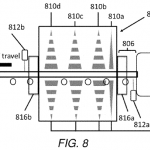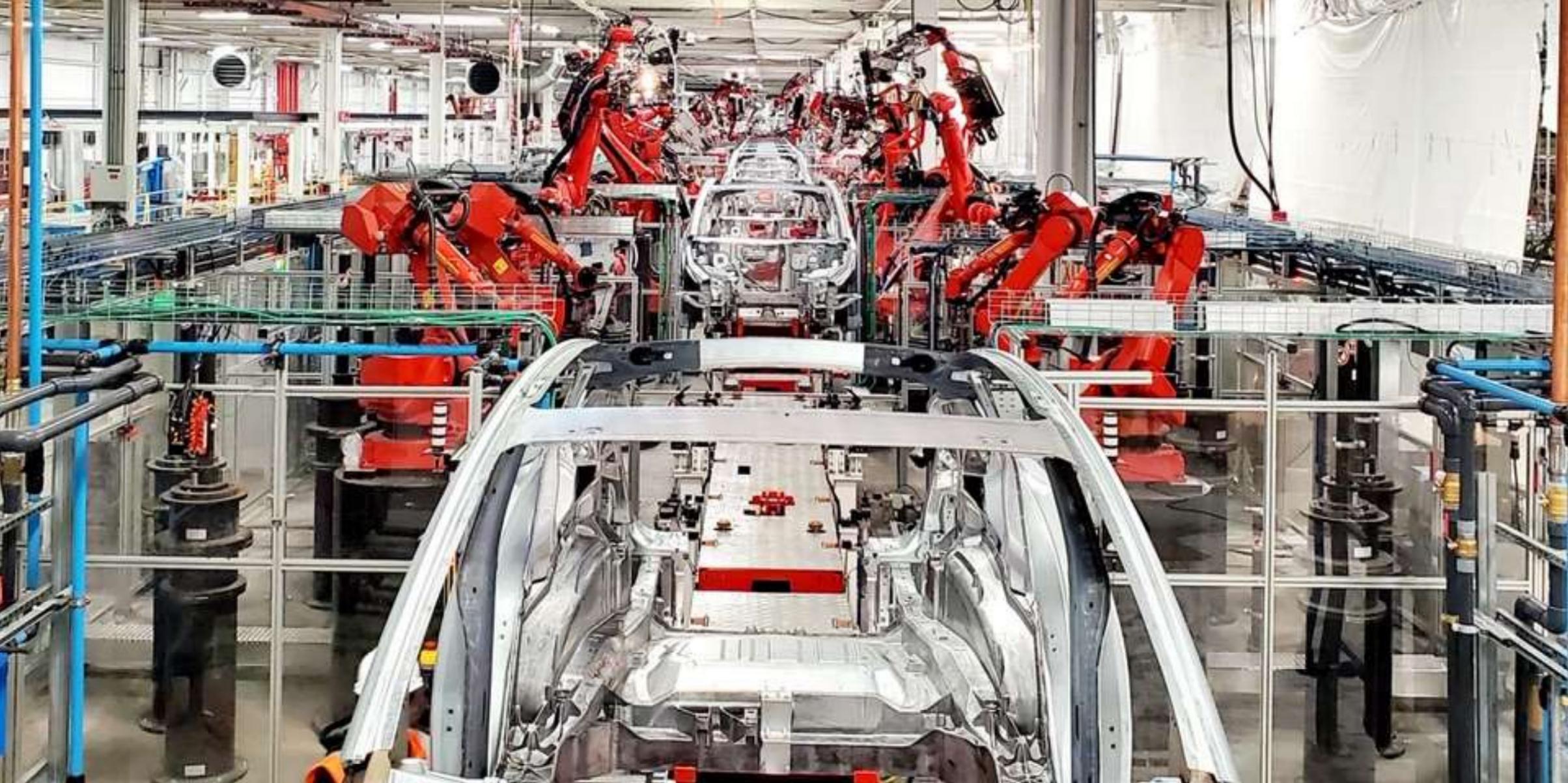
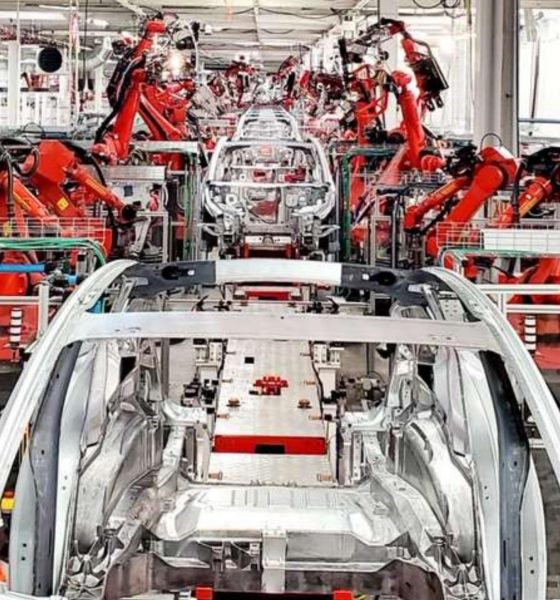
Investor's Corner
Tesla patents aluminum “spray quench” process for molecular-level strengthening
Tesla has submitted a patent that describes a new, more effective cooling process for manufacturing high-strength aluminum components to be used in its product line.
The patent entitled, “System and Method for Facilitating Pulsed Spray Quench of Extruded Objects”, describes a quenching process that aims to increase the strength, rigidity, and energy absorption of aluminum alloy components. A multi-way spray nozzle system would cool extruded aluminum with an atomized spray of liquid.
“A system includes a billet die at a proximal end configured to accept a billet and form an extrudate, a quench chamber located adjacent to the billet die for receiving the extrudate and comprising at least one pulsed width modulation (PWM) atomizing spray nozzle and a control module in communication with the at least one PWM atomizing spray nozzle and configured to independently control a liquid pressure, a gas pressure, a spray frequency, a duty cycle and flow rate of each at least one PWM atomizing spray nozzle,” reads the patent abstract.
Vehicles today use 6XXX aluminum alloys, which make up the front and rear bumpers, side and back steps, and knee bolsters of a car, the Kobelco Technology Review stated. Tesla also indicates within the patent that it uses 6XXX alloys for its vehicles. After these parts are extruded, they enter a quenching process, which is simply the process of cooling the metal after it has been heated.
Currently, Tesla utilizes a quenching process that involves cooling recently extruded aluminum alloys by soaking the parts in water. This process of quenching is recognized as “quick cooling.” While other cooling means are available, such as air cooling and furnace cooling, soaking the parts in water is the most time-effective method for automotive manufacturing.
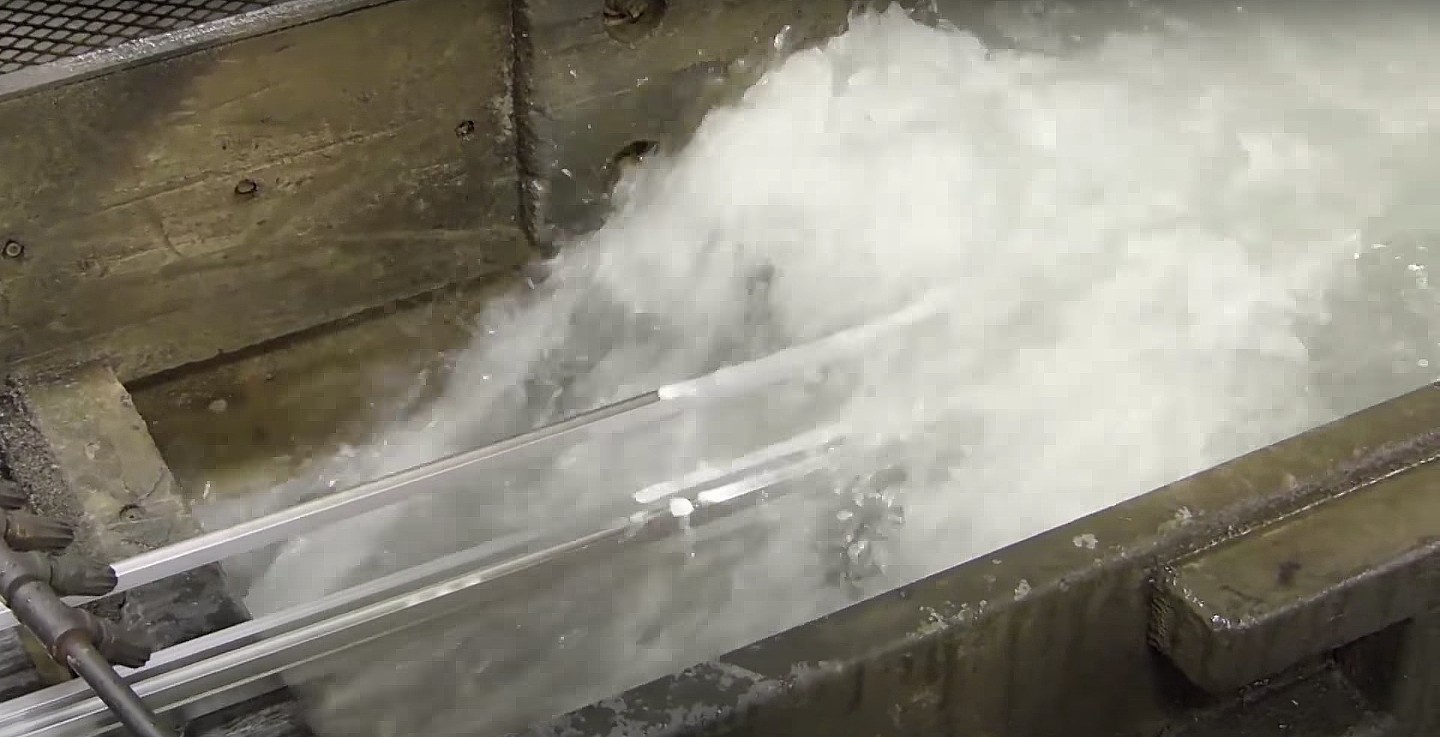
However, Tesla’s patent recognizes the adverse effects that quick cooling aluminum alloy parts can have on the structural integrity of the metal. Quick-cooling can not only lead to deformation and warping of metal parts, but things can change chemically as well.
Magnesium silicide, or Mg2Si, is present in these aluminum alloy parts, and quick cooling them can inhibit the compound’s ability to set in the metal. Without the proper setting of Mg2Si by quick-cooling the aluminum alloy in water, the metal requires a higher extrusion pressure and becomes more sensitive to heat, according to Light Metals 2014. The combination of these two properties can effectively compromise the mechanical properties of the final product, making the frame of the vehicle lose strength through the manufacturing process.
Tesla plans to utilize a multi-way spraying system to cool extruded aluminum parts, eliminating the soaking process that is used by so many manufacturers of aluminum alloy. In the patent, the company describes a quenching system that would spray newly extruded metals at varying rates depending on the size of the part. Between one half-gallon and 10 gallons of water per minute would cool the metal in question.
- Tesla’s described cooling process. (Credit: U.S. Patent Office)
- Tesla’s described cooling process. (Credit: U.S. Patent Office)
Two pyrometers would be placed at both the proximal and distal ends of the quench chamber. These would hold the responsibility of maintaining the metal’s temperature through the quenching process. The pyrometers would communicate with the system to ensure proper cooling temperatures, making sure the aluminum does not cool too quickly, allowing the Mg2Si to set. In conjunction with the temperature control, spray frequency, liquid pressure, gas pressure, and flow rate will also be monitored to ensure maximum strength after extradition is complete.
Tesla’s recognition of the flaws in quick-cooling extruded metals indicates the company’s realization that increased strength of a car’s frame could improve with a more efficient cooling technique.
In the teardown of the Model Y, Sandy Munro complimented Tesla’s use of what he called the “aluminum rear crush plate.” The piece is located at the trunk hatch and is designed to fold in the event of a rear-impact. The part saves the sides of the body from being compromised in a crash, which can ultimately total the vehicle if the chassis bends excessively.
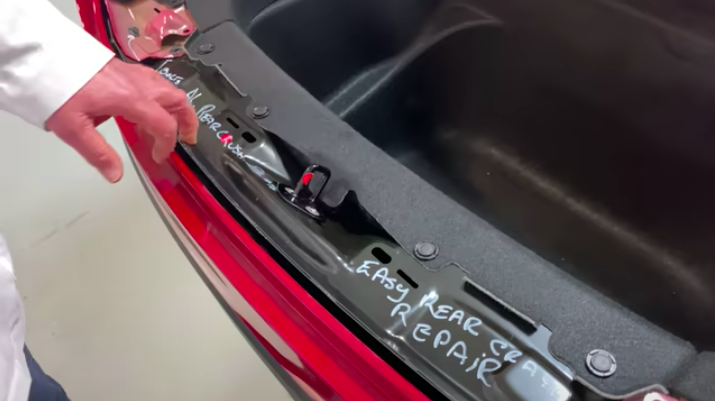
While the crush plate is durable and prevents excessive damage to the body of the Model Y, the quick-cooling process used during manufacturing could ultimately make the crush plate less sustainable than what it could be. Not to mention, the front bumper, rear bumper, side and back steps, and knee bolsters are also made of aluminum. Using a different cooling technique could eventually lead to an even safer Tesla vehicle, which already has many five-star crash safety ratings from several organizations located around the world.
Read Tesla’s patent for a new aluminum cooling process below.
Tesla SYSTEM AND METHOD FOR FACILITATING PULSED SPRAY QUENCH OF EXTRUDED OBJECTS by Joey Klender on Scribd

Investor's Corner
Tesla analyst realizes one big thing about the stock: deliveries are losing importance
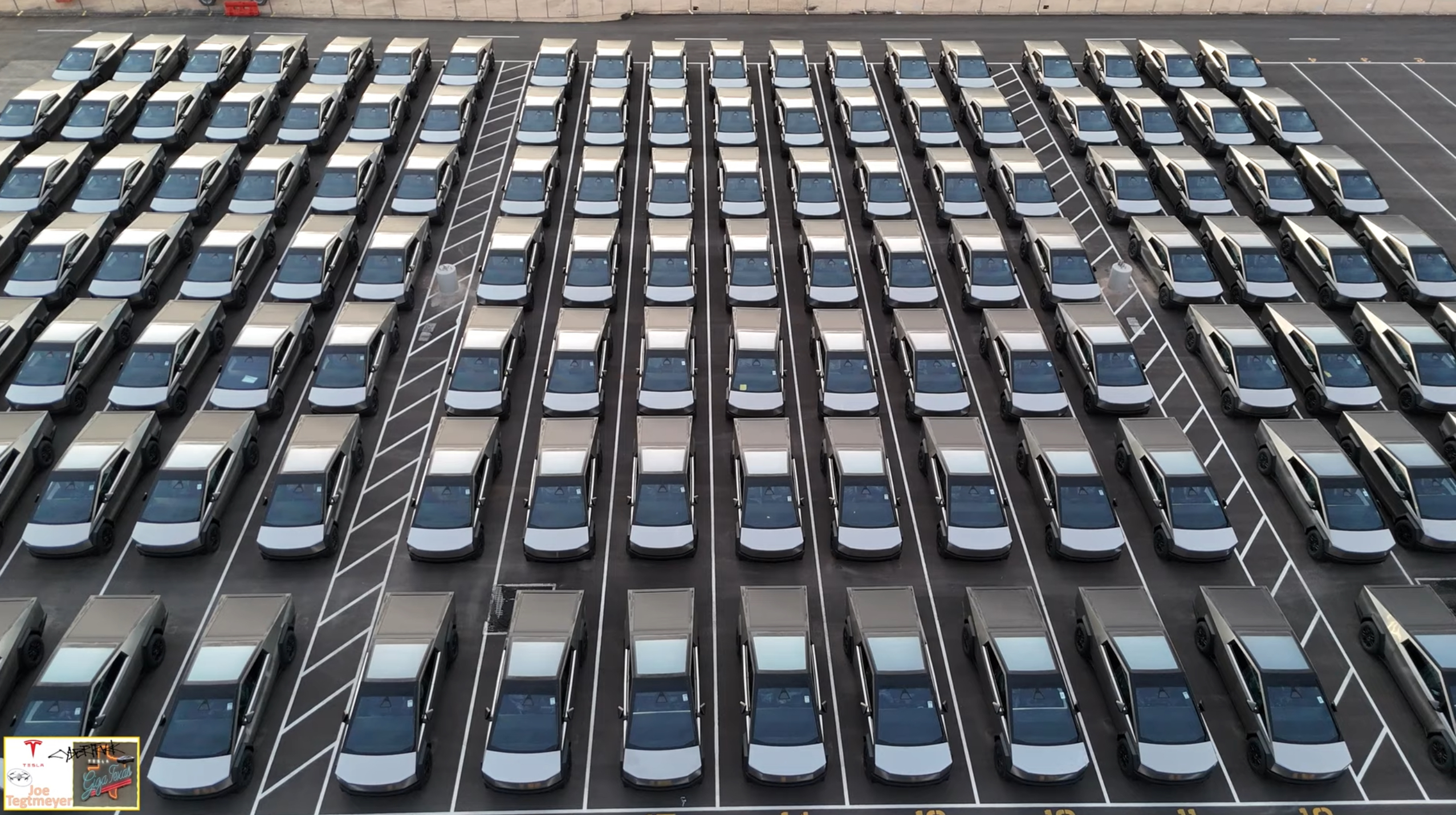
Tesla analyst Dan Levy of Barclays realized one big thing about the stock moving into 2026: vehicle deliveries are losing importance.
As a new era of Tesla seems to be on the horizon, the concern about vehicle deliveries and annual growth seems to be fading, at least according to many investors.
Even CEO Elon Musk has implied at times that the automotive side, as a whole, will only make up a small percentage of Tesla’s total valuation, as Optimus and AI begin to shine with importance.
He said in April:
“The future of the company is fundamentally based on large-scale autonomous cars and large-scale and large volume, vast numbers of autonomous humanoid robots.”
Almost all of Tesla’s value long-term will be from AI & robots, both vehicle & humanoid
— Elon Musk (@elonmusk) September 11, 2023
Levy wrote in a note to investors that Tesla’s Q4 delivery figures “likely won’t matter for the stock.” Barclays said in the note that it expects deliveries to be “soft” for the quarter.
In years past, Tesla analysts, investors, and fans were focused on automotive growth.
Cars were truly the biggest thing the stock had to offer: Tesla was a growing automotive company with a lot of prowess in AI and software, but deliveries held the most impact, along with vehicle pricing. These types of things had huge impacts on the stock years ago.
In fact, several large swings occurred because of Tesla either beating or missing delivery estimates:
- January 3, 2022: +13.53%, record deliveries at the time
- January 3, 2023: -12.24%, missed deliveries
- July 2, 2024: +10.20%, beat delivery expectations
- October 3, 2022: -8.61%, sharp miss due to Shanghai factory shutdown
- July 2, 2020: +7.95%, topped low COVID-era expectations with sizeable beat on deliveries
It has become more apparent over the past few quarters that delivery estimates have significantly less focus from investors, who are instead looking for progress in AI, Optimus, Cybercab, and other projects.
These things are the future of the company, and although Tesla will always sell cars, the stock is more impacted by the software the vehicle is running, and not necessarily the vehicle itself.
Investor's Corner
SpaceX IPO is coming, CEO Elon Musk confirms
However, it appears Musk is ready for SpaceX to go public, as Ars Technica Senior Space Editor Eric Berger wrote an op-ed that indicated he thought SpaceX would go public soon. Musk replied, basically confirming it.

Elon Musk confirmed through a post on X that a SpaceX initial public offering (IPO) is on the way after hinting at it several times earlier this year.
It also comes one day after Bloomberg reported that SpaceX was aiming for a valuation of $1.5 trillion, adding that it wanted to raise $30 billion.
Musk has been transparent for most of the year that he wanted to try to figure out a way to get Tesla shareholders to invest in SpaceX, giving them access to the stock.
He has also recognized the issues of having a public stock, like litigation exposure, quarterly reporting pressures, and other inconveniences.
However, it appears Musk is ready for SpaceX to go public, as Ars Technica Senior Space Editor Eric Berger wrote an op-ed that indicated he thought SpaceX would go public soon.
Musk replied, basically confirming it:
As usual, Eric is accurate
— Elon Musk (@elonmusk) December 10, 2025
Berger believes the IPO would help support the need for $30 billion or more in capital needed to fund AI integration projects, such as space-based data centers and lunar satellite factories. Musk confirmed recently that SpaceX “will be doing” data centers in orbit.
AI appears to be a “key part” of SpaceX getting to Musk, Berger also wrote. When writing about whether or not Optimus is a viable project and product for the company, he says that none of that matters. Musk thinks it is, and that’s all that matters.
It seems like Musk has certainly mulled something this big for a very long time, and the idea of taking SpaceX public is not just likely; it is necessary for the company to get to Mars.
The details of when SpaceX will finally hit that public status are not known. Many of the reports that came out over the past few days indicate it would happen in 2026, so sooner rather than later.
But there are a lot of things on Musk’s plate early next year, especially with Cybercab production, the potential launch of Unsupervised Full Self-Driving, and the Roadster unveiling, all planned for Q1.
Investor's Corner
Tesla Full Self-Driving statistic impresses Wall Street firm: ‘Very close to unsupervised’
The data shows there was a significant jump in miles traveled between interventions as Tesla transitioned drivers to v14.1 back in October. The FSD Community Tracker saw a jump from 441 miles to over 9,200 miles, the most significant improvement in four years.

Tesla Full Self-Driving performance and statistics continue to impress everyone, from retail investors to Wall Street firms. However, one analyst believes Tesla’s driving suite is “very close” to achieving unsupervised self-driving.
On Tuesday, Piper Sandler analyst Alexander Potter said that Tesla’s recent launch of Full Self-Driving version 14 increased the number of miles traveled between interventions by a drastic margin, based on data compiled by a Full Self-Driving Community Tracker.
🚨 Piper Sandler reiterated its Overweight rating and $500 PT on Tesla $TSLA stock
Analyst Alexander Potter said FSD is near full autonomy and latest versions showed the largest improvement in disengagements, from 440 miles to 9,200 miles between critical interventions pic.twitter.com/u4WCLfZcA9
— TESLARATI (@Teslarati) December 9, 2025
The data shows there was a significant jump in miles traveled between interventions as Tesla transitioned drivers to v14.1 back in October. The FSD Community Tracker saw a jump from 441 miles to over 9,200 miles, the most significant improvement in four years.
Interestingly, there was a slight dip in the miles traveled between interventions with the release of v14.2. Piper Sandler said investor interest in FSD has increased.
Full Self-Driving has displayed several improvements with v14, including the introduction of Arrival Options that allow specific parking situations to be chosen by the driver prior to arriving at the destination. Owners can choose from Street Parking, Parking Garages, Parking Lots, Chargers, and Driveways.
Additionally, the overall improvements in performance from v13 have been evident through smoother operation, fewer mistakes during routine operation, and a more refined decision-making process.
Early versions of v14 exhibited stuttering and brake stabbing, but Tesla did a great job of confronting the issue and eliminating it altogether with the release of v14.2.
Tesla CEO Elon Musk also recently stated that the current v14.2 FSD suite is also less restrictive with drivers looking at their phones, which has caused some controversy within the community.
Although we tested it and found there were fewer nudges by the driver monitoring system to push eyes back to the road, we still would not recommend it due to laws and regulations.
Tesla Full Self-Driving v14.2.1 texting and driving: we tested it
With that being said, FSD is improving significantly with each larger rollout, and Musk believes the final piece of the puzzle will be unveiled with FSD v14.3, which could come later this year or early in 2026.
Piper Sandler reaffirmed its $500 price target on Tesla shares, as well as its ‘Overweight’ rating.
